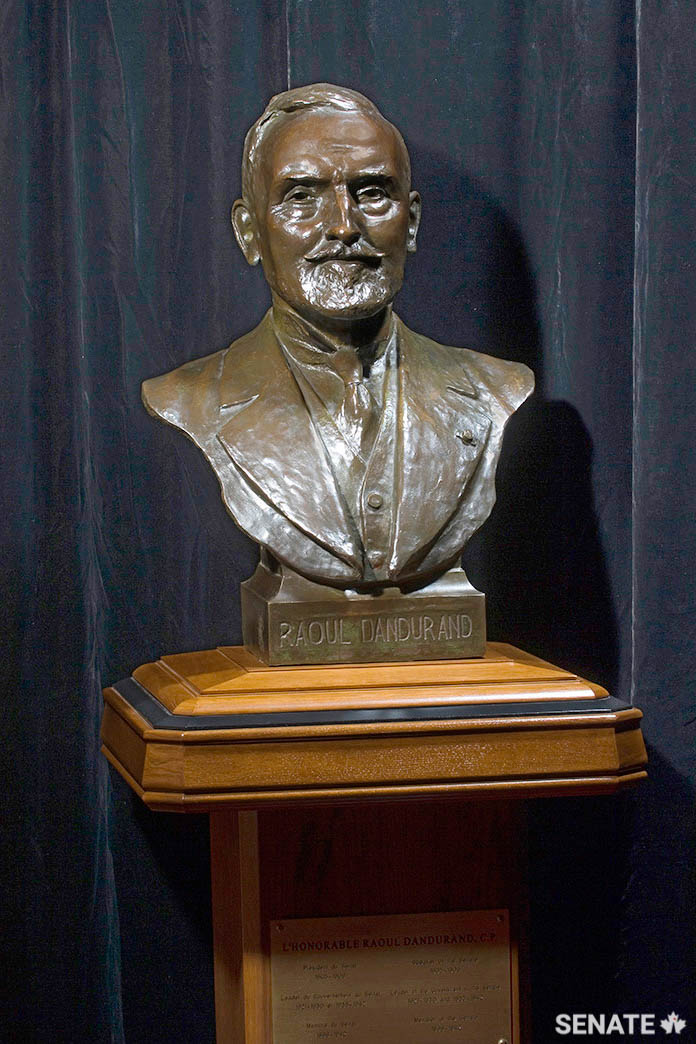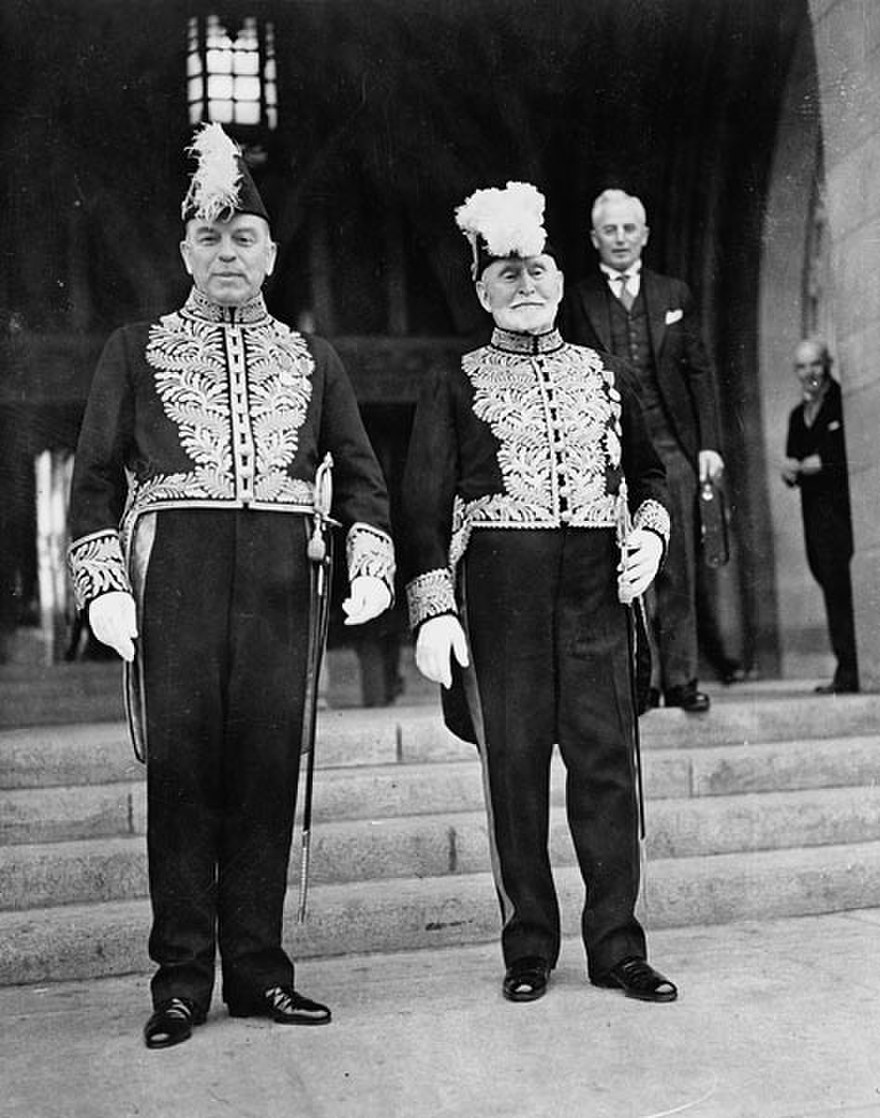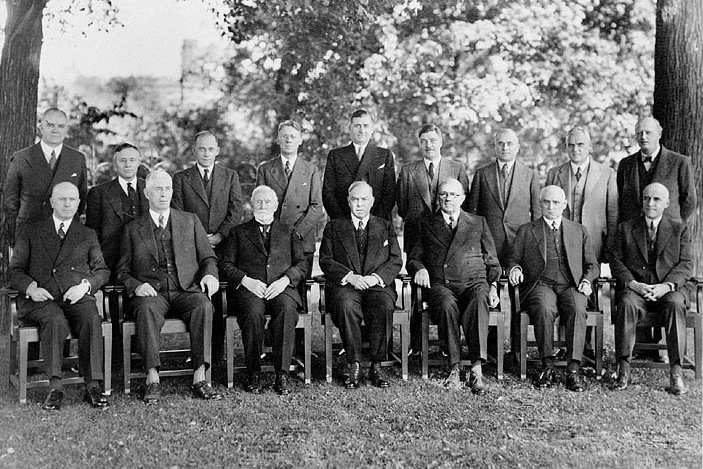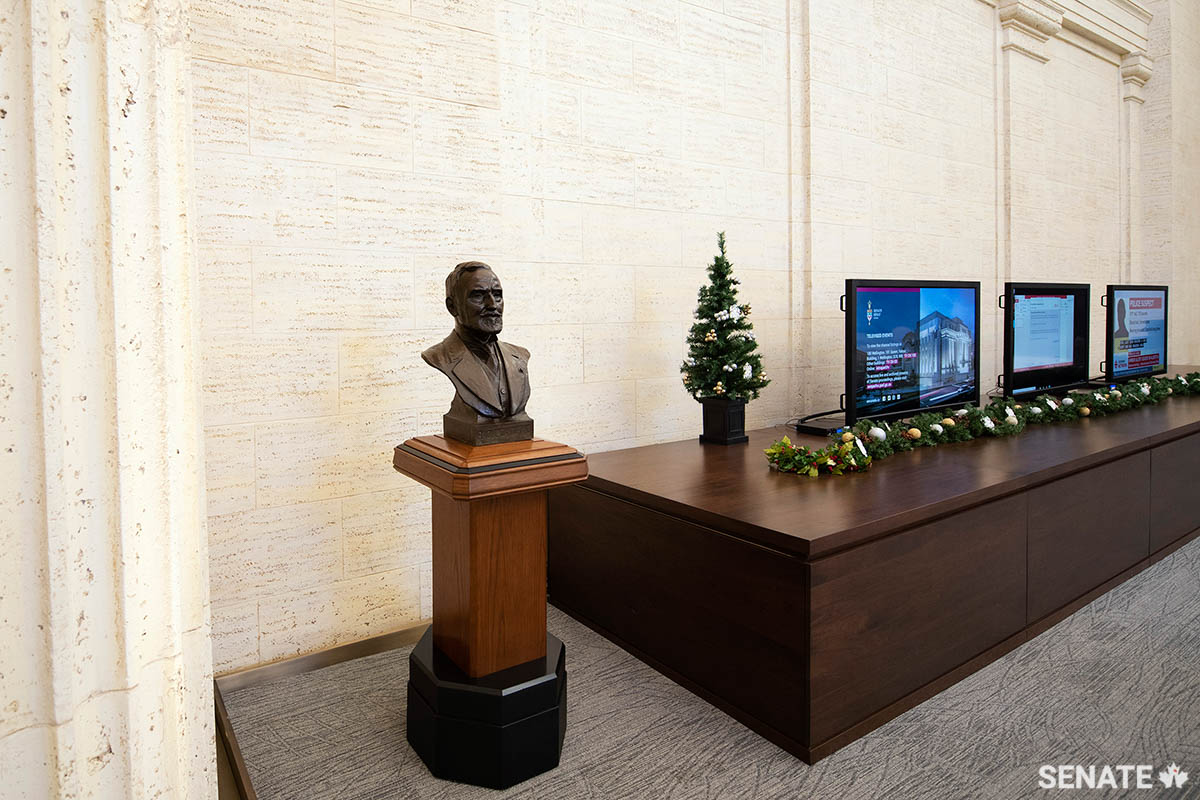‘A desire to do our best’: Former senator Raoul Dandurand and the Quebec sculptor who immortalized him

In February 2019, the Senate moved to the Senate of Canada Building, a former train station built in 1912. The Senate will occupy this temporary location while Parliament’s Centre Block — the Senate’s permanent home — is rehabilitated.
Although Centre Block is shuttered for rehabilitation work, Canadians can still experience its art and architecture through the Senate’s immersive virtual tour.
January 1942 was a dark time for Canada.
Nearly 300 Canadians were killed and 1,600 captured when Hong Kong fell to the Japanese on Christmas Day 1941. In January, German U-boats began torpedoing ships in the Gulf of Saint Lawrence.
Canadian soldiers were deploying to Europe, North Africa and the Caribbean. Back in Ottawa, a heated conscription debate consumed Parliament.
But the mood lightened briefly when the Senate paused on January 28 to mark the 80th birthday of Senator Raoul Dandurand, arguably the most influential Speaker in the Senate’s 153-year history and a man who had spent years trying to avert the war that was tearing the world apart.
A bronze bust of the senator by Quebec’s preeminent historical sculptor, Alfred Laliberté, was unveiled that evening.
Like the former senator, the bust has become a Senate icon.
For decades, it peered out from its plinth in Centre Block’s Salon de la Francophonie, a reception room commemorating 230 years of French rule in Canada. But, with the move of the Senate to the Senate of Canada Building, the bust needed a new home.
It now has a prominent place in the Senators’ Lounge of the Senate of Canada Building.
Senator Dandurand: A storied career
Appointed in 1898 by then-prime minister Sir Wilfrid Laurier, the 35-year-old Montreal lawyer was, at the time, the youngest senator ever.
He served in the Red Chamber for 44 years, an era that encompassed the Klondike Gold Rush, the Great Depression and both world wars. While serving in the Senate, he was a minister in every cabinet Prime Minister William Lyon Mackenzie King formed between 1921 and 1942, and he was Leader of the Government in the Senate or Leader of the Opposition for most of that time.
Appointed Speaker in 1905, he went on to redefine the role. He oversaw a significant overhaul of the Rules of the Senate, expanding the Speaker’s role to include the power to intervene in debates and preserve order and decorum.
In 1924, he went to Geneva, Switzerland as Canada’s senior representative to the Assembly of the League of Nations, the precursor to today’s United Nations. He was elected its president the next year, the first Canadian to hold the post.
In Ottawa, Senator Dandurand campaigned for a more collegial Senate, wanting to distinguish the Red Chamber from the more rough-and-tumble House of Commons.
“The framers of the Confederation intended this Chamber not to be a duplicate of the Commons,” he said in 1936.
“We approach all questions with a desire to do our best for the general interest of the country.”
Alfred Laliberté: ‘Quebec’s Sculptor’
Sculptor Alfred Laliberté, like the subject of his famous bronze, was virtually unknown outside his home province until Prime Minister Wilfrid Laurier helped launch him onto the national stage.
Mr. Laliberté began sculpting at age 15. Sir Wilfrid, impressed with the young artist’s work, helped secure him a spot in Montreal’s prestigious Conseil des arts et manufactures in 1896.
Mr. Laliberté furthered his studies at the École nationale supérieure des Beaux-Arts in Paris. He returned to Canada in 1907 and began producing larger-than-life bronzes that drew inspiration from Quebec folklore and history.
His sculptures of explorers Jacques Marquette and Louis Jolliet, Jesuit missionary Jean de Brébeuf and Jean Talon, the first intendant of New France, stand in front of the National Assembly in Quebec City.
His bust of explorer Samuel de Champlain stands in Paris’s Place du Canada, near the Champs-Élysées.
He died in 1953, having created over 900 works and earned the affectionate title “Quebec’s Sculptor.”
A moving tribute
Senator Dandurand died just six weeks after that January 1942 ceremony, the war still raging and having spent a significant part of his career fostering a spirit of internationalism intended to prevent that very war.
Prime Minister King lauded his colleague’s work championing Canadian values on the world stage.
“Senator Dandurand has always placed above every other consideration the position which he believed Canada should hold and will hold among the nations of the world,” the prime minister said.
The senator was deeply moved.
“My dear old friend Sir Wilfrid Laurier,” he said, “felt that, generally speaking, people were good and kind. It is in the fact that I have been surrounded by men of that nature here, in the Privy Council, and throughout my life, that I find the explanation of their forgetting my shortcomings and gathering around me today to tell me, as they have done before, of their friendship for me.”
“Life without sympathy and without friends is hardly worthwhile. Of both you have given me full measure.”


 Senator Dandurand, left, and Prime Minister King attend a League of Nations conference in Geneva, Switzerland in September 1936. (Photo credit: Library and Archives Canada)
Senator Dandurand, left, and Prime Minister King attend a League of Nations conference in Geneva, Switzerland in September 1936. (Photo credit: Library and Archives Canada)
 Prime Minister King’s cabinet in 1939. The prime minister is seated in the centre with Senator Dandurand to his right. (Photo credit: Library and Archives Canada)
Prime Minister King’s cabinet in 1939. The prime minister is seated in the centre with Senator Dandurand to his right. (Photo credit: Library and Archives Canada)



